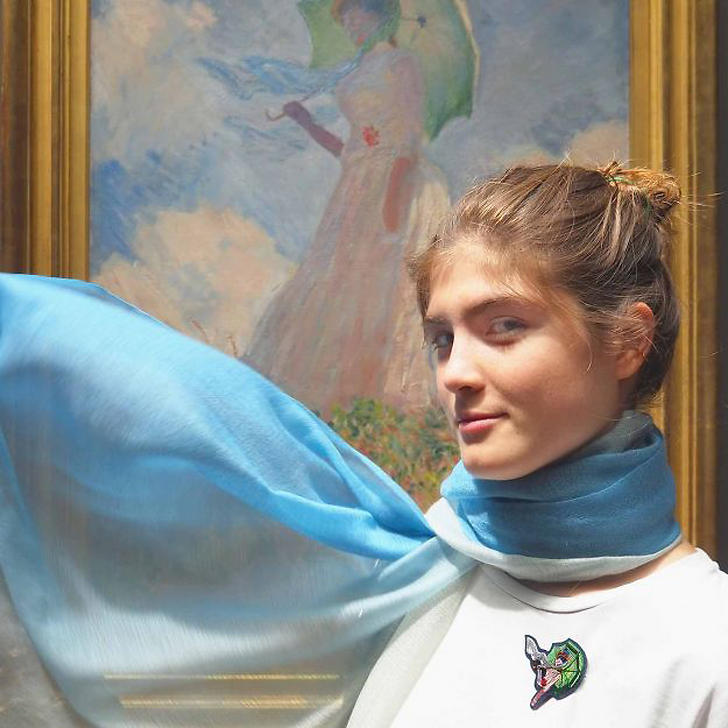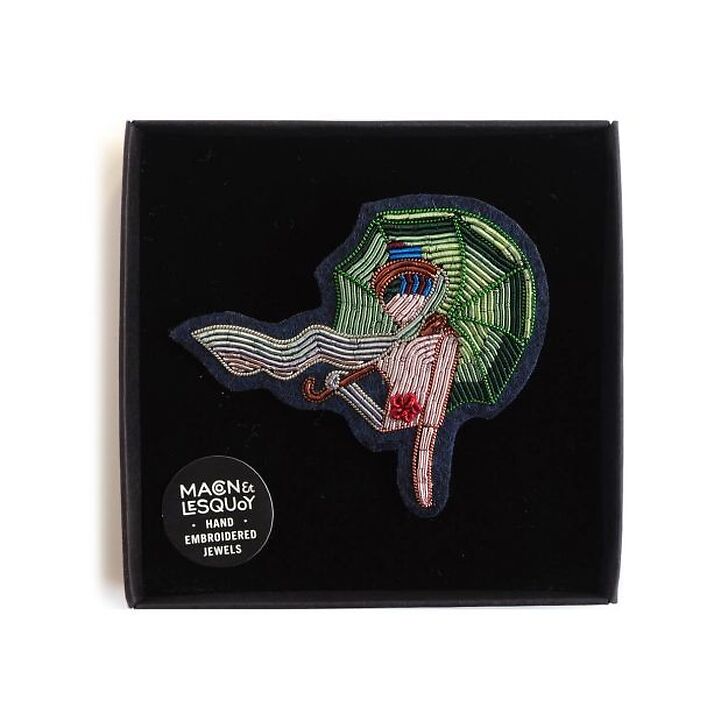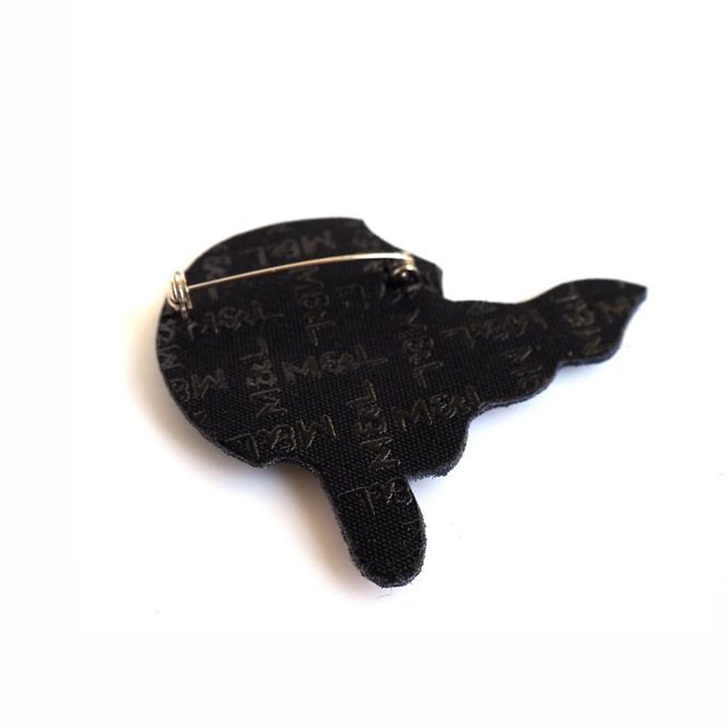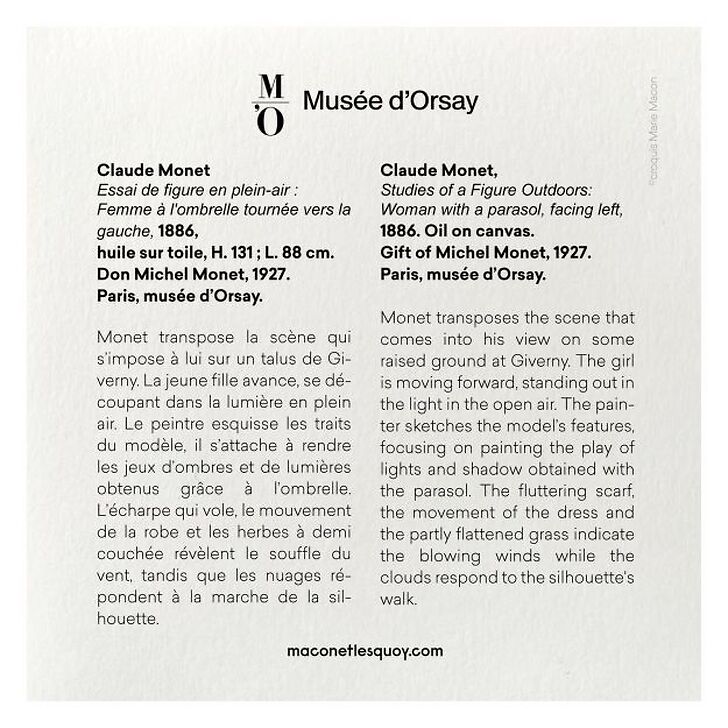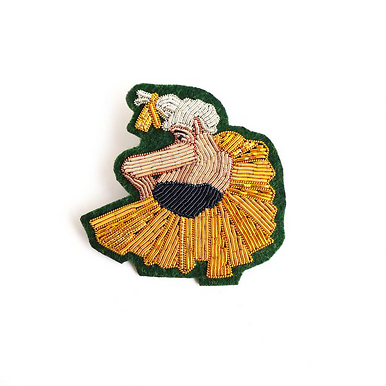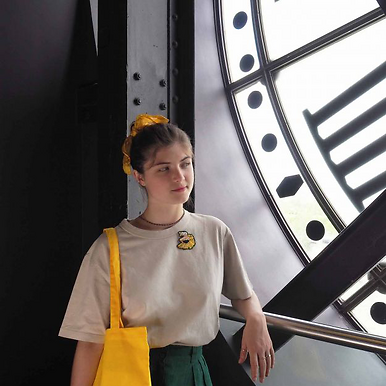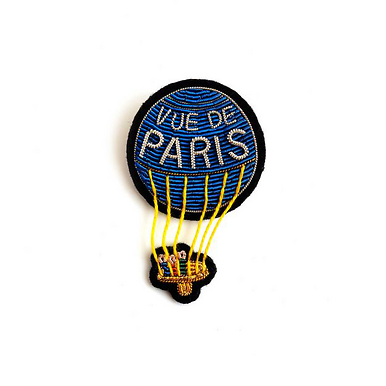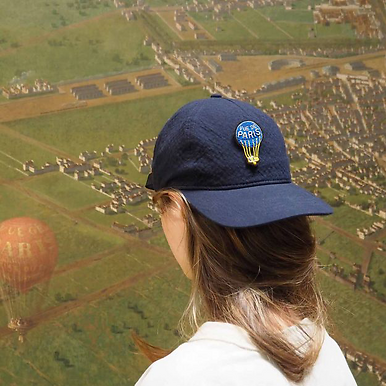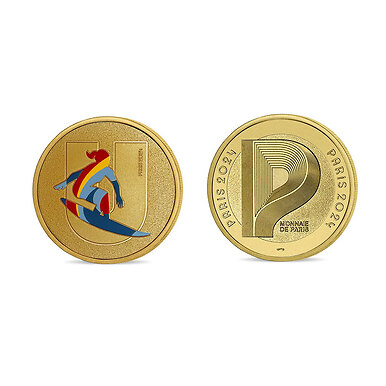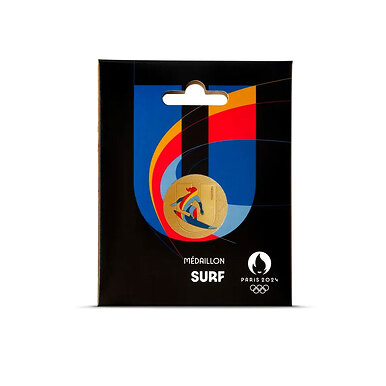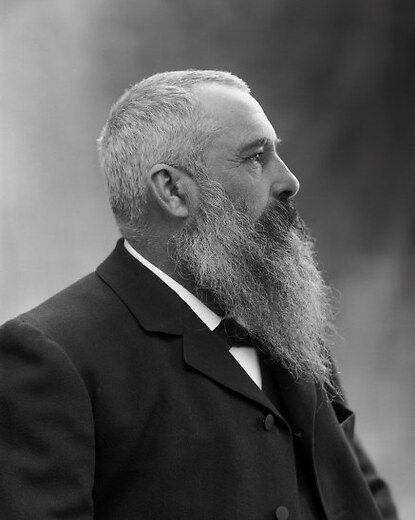Brooch Woman with a parasol - Macon & Lesquoy - Musée d'Orsay
BF491492
Read more
Sold by GrandPalaisRmn
Characteristics
- Dimensions
- 5,9x6,7cm
- Material of the original work
- Huile sur toile
- Artist
- Claude Monet (1840-1926)
- Maintenance
- Avoid contact with water, chemicals and cosmetics
- Museum
- Musée d'Orsay
- Art movement
- Impressionism
- Reference
- BF491492
- EAN
- 3700944723887
- Matière de l'article
- Metallic thread
- Original work kept at
- Paris, musée d'Orsay

